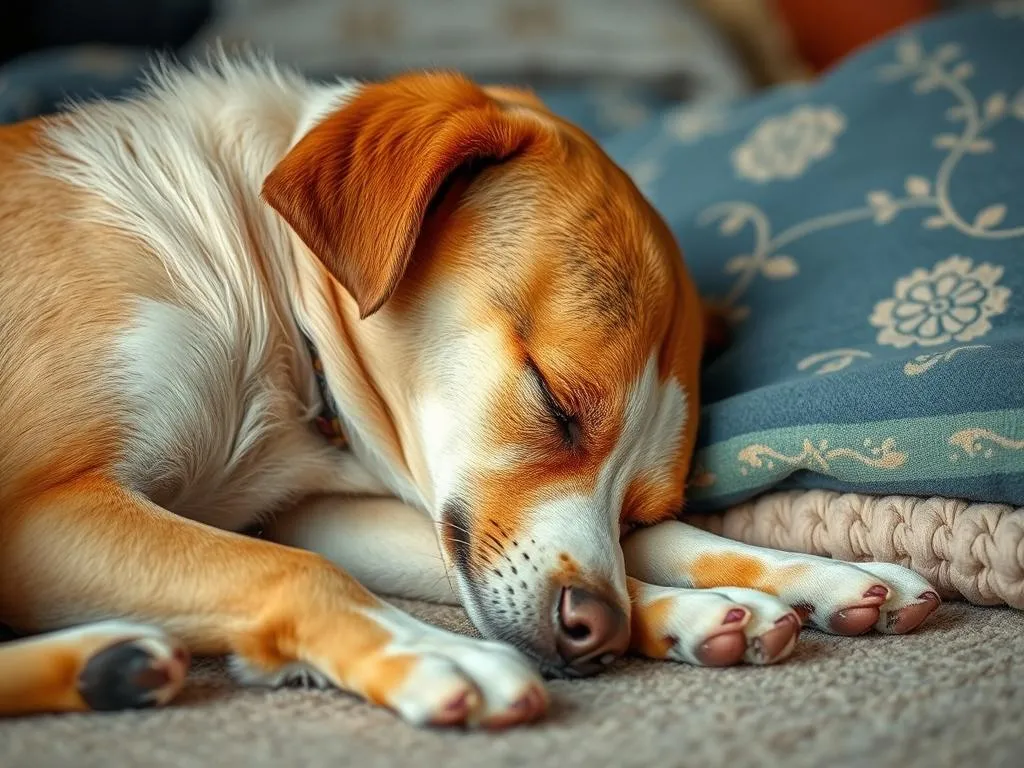
Introduction
Dog health care is essential for ensuring the well-being and happiness of our furry companions. As a dog owner, you might face various health concerns, one of which is the issue of why is my female dog peeing in her sleep. This condition can be distressing for both the dog and the owner, necessitating a deeper understanding of its causes and potential solutions.
Understanding urinary incontinence in female dogs is crucial for effective management and treatment. In this article, we will explore the reasons behind this condition, the signs to look for, and when to seek veterinary assistance.
Understanding the Issue
What is Incontinence?
Urinary incontinence in dogs refers to the involuntary leakage of urine, which can occur during sleep or while awake. This condition differs from normal urination habits, where a dog has control over its bladder and can hold pee until it is an appropriate time to eliminate. Incontinence can manifest as urine dribbling or pooling in the dog’s sleeping area, leading to both physical and emotional discomfort for the pet.
Common Signs of Incontinence
Recognizing the signs of urinary incontinence is vital for early intervention. Here are some common symptoms to look out for:
- Frequent urination: Increased trips outdoors or to the designated potty area.
- Wet bedding or sleeping area: Noticeable wet spots where the dog sleeps.
- Accidents during sleep: Urine loss occurring while the dog is resting or sleeping.
- Behavioral changes: Signs of distress, anxiety, or changes in routine may arise as a result of this condition.
Causes of Urinary Incontinence in Female Dogs
Medical Conditions
Several medical conditions can lead to urinary incontinence in female dogs. Understanding these can help you identify the problem more effectively.
Urinary Tract Infections (UTIs)
UTIs are common in dogs and can cause frequent urination, straining to urinate, and sometimes incontinence. Symptoms include:
- Increased urination frequency
- Blood in the urine
- Unpleasant odor
- Licking of the genital area
Diagnosis usually involves a urinalysis, and treatment typically includes antibiotics.
Hormonal Changes
Hormonal changes, particularly after spaying, can lead to a condition known as spay-related incontinence. This occurs when estrogen levels drop, reducing the strength of the urethral sphincter muscle, making it harder for the dog to control urination.
Neurological Disorders
Certain neurological conditions can affect a dog’s ability to control its bladder. Diseases such as intervertebral disc disease or degenerative myelopathy can impair the nerves responsible for bladder control.
Bladder Stones or Tumors
Bladder stones or tumors can irritate the bladder lining, leading to frequent urination and possible incontinence. Symptoms may include:
- Straining to urinate
- Blood in the urine
- Painful urination
Diagnosis often involves imaging techniques like X-rays or ultrasounds, followed by appropriate treatment.
Non-Medical Factors
In addition to medical issues, several non-medical factors can contribute to urinary incontinence.
Age-related Changes
As dogs age, their bladder control may diminish, leading to increased accidents. Senior dogs may have weaker muscles and less control over their bodies, making incontinence more common.
Stress and Anxiety
Like humans, dogs can experience stress and anxiety, which can manifest physically, including urinary issues. Changes in the home environment, such as moving or introducing a new pet, can trigger these responses.
Diet and Hydration
What your dog eats and how much water it consumes can also affect urination patterns. Diets high in salt or certain additives may lead to more frequent urination, while inadequate hydration can cause urinary tract issues.
Diagnosing the Problem
When to Consult a Veterinarian
If you notice your female dog peeing in her sleep or exhibiting any signs of incontinence, it’s essential to consult a veterinarian. Signs that indicate a need for professional help include:
- Persistent accidents in the house
- Changes in urination habits
- Signs of discomfort or pain when urinating
Early intervention is crucial to address underlying health issues effectively.
What to Expect During a Veterinary Visit
During a veterinary visit, you will discuss your dog’s symptoms, behavior, and any changes you have observed. Diagnostic procedures can include:
- Urinalysis: To check for infections or abnormalities.
- Ultrasound: To visualize the bladder and identify stones or tumors.
- Blood tests: To evaluate overall health and rule out systemic issues.
Your vet can then determine the best course of action based on the findings.
Treatment Options
Medical Treatments
There are various medical treatments available, depending on the underlying cause of incontinence.
Medications
Common medications for urinary incontinence may include:
- Phenylpropanolamine: A drug that strengthens the urethral sphincter.
- Estrogen supplements: To help improve bladder control in spayed females.
- Antibiotics: If a urinary tract infection is present.
Each medication works differently, so it’s essential to follow your veterinarian’s recommendations.
Hormone Replacement Therapy
For some dogs, hormone replacement therapy may be appropriate, particularly if the incontinence is linked to hormonal changes post-spaying. This option can help restore the hormonal balance necessary for bladder control.
Surgical Options
In severe cases of urinary incontinence, surgical options may be necessary. Procedures can range from bladder neck surgery to implanting a device that helps control urination. While surgery can be effective, it is essential to weigh the risks and benefits with your veterinarian.
Lifestyle Changes
In addition to medical interventions, lifestyle changes can help manage incontinence.
Dietary Adjustments
Consult your vet about adjusting your dog’s diet. Providing a balanced diet with adequate hydration can help maintain urinary health. Avoiding overly salty foods and ensuring your dog has access to fresh water at all times is essential.
Training and Behavioral Modifications
Training techniques can assist in managing incontinence. Consider:
- Frequent potty breaks: Increasing the number of outdoor trips can help.
- Positive reinforcement: Rewarding your dog for successful potty trips can reinforce good behavior.
- Using doggie diapers: For short-term management, especially during sleep.
Environmental Modifications
Creating a comfortable sleeping area can also help. Consider:
- Using waterproof bedding
- Placing pee pads in the sleeping area
- Ensuring easy access to outdoor potty areas
Preventive Measures
Regular Veterinary Check-ups
Routine health assessments are vital for early detection of potential health issues. Regular veterinary visits can help monitor your dog’s overall health, including urinary function. Vaccination and preventive care are also essential components of dog health care.
Monitoring Health Changes
Keeping a diary of your dog’s urination habits can help identify changes early. Note the frequency of urination, any accidents, and any associated behaviors. Recognizing these changes promptly allows for timely intervention.
Conclusion
Understanding why is my female dog peeing in her sleep is essential for providing the best care possible. From medical conditions to lifestyle factors, many aspects can contribute to this distressing issue. By recognizing the signs, consulting with a veterinarian, and exploring treatment options, you can help your furry friend regain control over her bladder.
Being proactive about your dog’s health will ensure they live a happy, healthy life, free from the discomfort and embarrassment of incontinence. With love, care, and appropriate management, your dog can continue to be a cherished part of your family.









